David H. Janda,*+ MD, Cynthia Bir*+, MS, RN, Bart Wild,* Steve Olson, $
and Robert N. Hensinger, || MD
From *The Institute for Preventative Sports Medicine and Orthopedic Surgery Associates,
+ Catherine McAuley Health Systems, and Departments of $ Recreational Sports and ||
Pediatric Orthopedic Surgery, University of Michigan, Ann Arbor, Michigan
See the Abstract
Soccer is the most popular team sport world wide with an estimated 40 million amateur
participants.[4] In addition, soccer is the fastest growing
team sport in the United States.[6] The Consumer Product Safety
Commission has determined through the National Electronic Injury Surveillance System
between 1989 and 1992 - 647,368 injuries were documented through Emergency Rooms in the
United States secondary to soccer.[7] It should be noted, this
figure is an under-estimate of the actual number of injuries that are occurring nationwide
as that this figure does not include non-hospitalization physician visits. The
distribution of the injuries as determined by the Consumer Product Safety Commission
reveals 71% of the injuries were sustained by males and 29% females. Ankle injuries
comprised 19.2% of total injuries; knee injuries 12.7%; head and facial injuries 11.3%;
lower leg injuries 7.8%, and foot injuries 7.5%. In a previous study, [5] 3.7 injuries have been documented per 1000 hours of soccer per
player for male participants between the ages of 12 to 18 years.
In addition, 18% of all injuries occur to the goal keeper. It should be noted that the
goal keeper comprises 6% of the total soccer population. It is therefore evident that an
inordinate percentage of injuries are occurring to the person playing the position of goal
keeper. The Consumer Product Safety Commission, over a 13 year time period, has identified
18 individuals whom have died secondary to impacts with the goal post. This particular
mechanism of fatalities within the sport of soccer is the most common. The common scenario
for these fatalities is the goal post falling on top of the child. Thus it would appear
that the area in and around the goal is the most dangerous for serious injury. However, if
the goal posts are to be made stationary to prevent tip over fatalities they could pose as
a hazard to impact injuries in the respect that an immovable object is placed on the field
of play. It has been suggested that padding stationary goal posts is a viable alternative
to eliminating the risk of injuries in soccer. To date, no laboratory or field testing of
various types of padding systems has been reported in the literature. The purpose of this
study is to present laboratory and clinical experience with padded system for the goal
post in the prevention of head injury in soccer.
CASE STUDIES
Two case studies are presented involving impact with a goal post. The impacts
illustrated in the case studies involve a movable goal post system falling down on top of
a player. It has been previously purposed that a removable goal post system would reduce
and possible eliminate injuries in the sport of soccer. The case studies illustrate the
necessity of a more stationary and secure type of goal post system.
Case 1
A 10 year-old male was struck by a goal blown over by wind. He sustained a C4-5
fracture dislocation. At the time of the injury the patient was neuro intact with the
exception of a C5 radiculopathy. The patient was placed in Halo traction. A MRI revealed
no evidence of cord compression. The patient underwent a posterior cervical fusion C3
through C5 with posterior wiring and an iliac crest bone graft and a decompression of the
fifth cervical nerve root. He remained in the Halo immobilization for eight weeks. His C5
radiculopathy findings have cleared and he is currently asymptomatic.
Case 2
An 11 year-old male was standing near a soccer goal post when some other children
picked up the goal and tipped it over on him. The patient was struck in the head and lost
consciousness. Both lower extremities were pinned beneath the cross bar of the goal.
The patient regained consciousness and was evaluated at a local hospital where he was
transferred to a tertiary referral center. In addition to his closed head injury, he was
found to have a left Salter III condylar fracture of the distal femur and a right distal
femoral shaft fracture. The patient was placed in right balanced skeletal traction and in
a left long leg cylinder cast. After six weeks of skeletal traction, the patient was
placed in a right hip Spica cast for 2 months duration. Physiotherapy was required to
regain range of motion and strength of the lower extremities.
Upon last follow-up, the lower extremities revealed a full range of motion in both
knees and hips, and the patient was pain free. The patient, however, has had difficulty
secondary to his closed head injury. He has had difficulties with short term memory, a
short attention span, behavior difficulties and falling grades at school, all of which
were not present prior to his injury. The patient is currently being treated in a closed
head injury protocol.
LABORATORY TESTING PHASE
Horizontal impact testing apparatus
A horizontal impact apparatus was utilized in this study (Fig. 1).
This testing unit consists of a sixteen foot long horizontal track rigidly mounted with a
1.27 cm diameter steel guide extending the full length of the track. The carriage assembly
has four sets of roller bearing units mounted at a 45 degree angle allowing the carriage
to have nearly friction free horizontal movement along the steel guide. A Greenco
Cable-trol cylinder is utilized to accelerate the carriage assembly. The nylon coated
steel cable attached to the piston of the cylinder has a trolley block that fits into the
bottom side of the carriage assembly and propels the assembly down the track. A central
control panel allows for the selection of six adjustable electrical solenoid valves
located on the exhaust ports of the air cylinder system. A charge tank allows for the
entire system to be charged to a desired pressure prior to a specific trial. By changing
the amount of pressure within the cylinder system and selecting a combination of the
solenoid valves, the velocity of the assembly can be regulated.
The carriage assembly consists of a steel box measuring 45 cm x 30cm x 25 cm weighing
approximately 65 pounds. This box is utilized to simulate a person's body and weight can
be added or subtracted to the box in order to obtain the desired body weight. A Humanoid
head form is mounted to a steel rod approximately 2.5 cm in diameter which is then
attached to the steel box. The entire carriage system without added weight is 85 pounds.
This system better simulates a person impacting a goal post than the standard
head-neck-trolley system because the body weight is also simulated.
This machine accelerates the carriage and a Humanoid head form along the steel track
until an impact occurs with an instrumented anvil at the end of the track. A load cell
within the anvil is used to measure the force of the impact. The acceleration
(deceleration) of the Humanoid head form is measured near its center of gravity. The
velocity of the carriage system is measured just prior to impact using a mechanical
trigger system.
The Humanoid head form was developed and validated at Wayne State University, Detroit,
Michigan for utilization in impact testing of the head.[1] The
National Operating Committee on Standards for Athletic Equipment (NOCSAE) have developed
standards for headgear utilized in athletic events based on tests performed with this head
form.
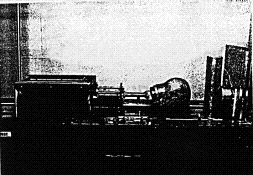
Figure 1. Horizontal impact testing machine used to test goal posts and padding in
the laboratory setting.
Goal posts tested:
A baseline test was performed utilizing both square and round aluminum goal post
initially without any type of protective covering. Then, eleven different types of goal
post pads were applied to the bare goal posts (Fig. 2). These pads
were within the following four groups:
Group #1 - (Vinyl Nitrate + Skin [VN+S], Round and Square; N=2): These pads were
fabricated from 1.25 cm thick vinyl nitrile foam, 71 pound density, closed cell and
including an outer vinyl skin that was .05 cm thick.
Group #2 - (Minicell polyethelyne [MCP] and Minicell polyethelyne and Skin [MCP+S], Round
and Square; N = 4): These pads were molded into round and square shapes from sheets of 3 -
4 pound minicell polyethylene into round and square shapes. Pads were tested with and
without an outer vinyl skin.
Group #3 - (A and C [1.25 cm thick] and B and D [1.88 cm thick]; N=4): These pads were
fabricated from 1.25 cm thick vinyl nitrile foam, 71 pound density, closed cell with the
outer vinyl skin with a .95 cm ABS innercore.
Group #4 - (VN+S Round-Weathered; N = 1): These pads were fabricated from 1.25 cm thick
vinyl nitrile foam, 71 pound density, closed cell with the outer vinyl skin. They were
exposed to the natural elements over a period of two years.
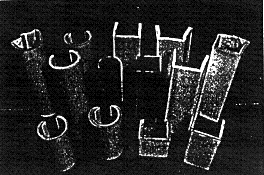
Figure 2. The 11 types of goal post pads that were tested on both the horizontal
and vertical impact machines.
Testing Matrix:
Since a standard for testing goal posts is nonexistent each goal post pad was evaluated
using head impact testing methods. The head-neck-trolley system (vertical impact
apparatus) specified in the National Operating Committee on Standards for Athletic
Equipment (NOCSAE) standards for helmet testing was utilized as one testing method and the
horizontal impact apparatus provided a second means of testing. In both methods, the load
of the impact and the acceleration at the center of gravity of the head form was measured
and recorded.
The first tests were performed with the head-neck-trolley system (Fig.
3). The goal posts were placed on an anvil firmly attached to the base plate of the
testing unit. A drop height of approximately six inches was established in order to obtain
an impact velocity of 1.07 m/s.
The horizontal impact apparatus was then utilized to test each goal post. The posts
were placed directly in front of the anvil containing the load cell. The carriage system
was then accelerated to obtain the same impact velocity of 1.07 m/s which was accomplished
by pressurizing the system to 24 psi and opening the first solenoid valve. In both tests,
impacts occurred directly to the parietal region of the head form and were transferred to
the center of gravity of the head form where the accelerometer was located.
Five impacts were performed on each goal post and pad combination at each of the
following temperatures: 0oC, 12.4oC, and 38oC. These represent the extreme and normal
temperatures encountered during the play of soccer. Each pad has a vinyl outer skin that
is waterproof, therefore other weather conditions such as rain were not assessed. After
each impact for the controls; no pad, a new goal post was utilized to avoid any
discrimination cause by the first impacts such as deformation of the post. Biomechanical
responses:
From the center of gravity of the Humanoid head form, accelerations were recorded. The
total load transferred from the head form through the goal post was recorded by the load
cell located in the anvil. A Texas Micro Systems 486 computer with a RC Electronics A-to-D
conversion board and software served as the data acquisition system utilized to record
these responses. The sampling rate was 5000 Hz. A total of three channels of data were
collected with the third channel being the velocity obtained by the mechanical trigger
system. Maximum impact loads were also calculated using the load cell data.
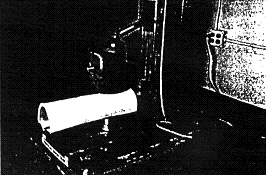
Figure 3. Vertical impact testing machine used to test goal posts and padding in
the labratory setting.
PILOT FIELD PHASE OF STUDY
The Ann Arbor and Saline communities in the State of Michigan participated in this
phase of the study. Four soccer fields in Saline and two soccer fields in Ann Arbor were
equipped with the padded goal post. The padding utilized was the VN+S prototype as
described in the laboratory phase portion. The soccer teams participating in youth, teen,
and adult soccer leagues played their games on fields equipped with the padded posts
between 1991 and 1993. Field supervisors were utilized on each field to document
collisions with the goal posts, rebounds of the ball upon impact with the soccer goal
post, and reaction of the players, coaches, fans, as well as referees. An injury was
defined as any event which necessitated the game being stopped, or the player having to be
removed from play. Additionally, it was considered an injury when anyone missed a
subsequent practice or game. A total of 471 games were monitored between 1991 and 1993 in
this manner.
RESULTS OF LABORATORY TESTING PHASE
Horizontal and vertical impact results
Table 1 reveals the B+D padding to be the best for force
reduction at all temperatures in both the horizontal (31%-41%) and vertical (55%-63%)
impacts. The VN+S pad reduced the force of impact at all temperatures between 27%-34% in
horizontal impact testing and 40%-51% in vertical impact testing. These values were
statistically significant when compared to the control of no pad. (p<0.05) However,
there was no statistical significant difference between the VN+S and B+D pads. These
findings are also demonstrated in figures 4 and 5.
Table 2 illustrates that without padding the goal posts forces
generated are higher with square posts both on the horizontal and vertical impacts. With
padding present the square posts reduced the force of impact greater than the round posts,
however not to a statistically significant level. Without the padding, the square goal
posts were observed to deform slightly but the round posts did not appear to be effected.
Both the square and round posts did not appear to be effected when tested with pads in
place.
With all factors considered, the B+D padding, followed by the VN+S, demonstrated the
greatest reduction in the force of impacts both horizontally and vertically. The shape of
the goal posts and the variance in temperatures did not have a statistical significance on
these force of impact results.
After two years of weathering the VN+S padding continued to significantly reduce the
horizontal impact force (Table 3) (Fig. 6).
There was no statistically significant difference between the new pads tested and the pads
that had been weathered. The structural properties of the pads remained unchanged as well.
Table 4 demonstrates that larger forces were generated with the
horizontal impacts then with the vertical impacts. The addition of body weight in the
horizontal testing could well be more representative of impacts occurring on the field.
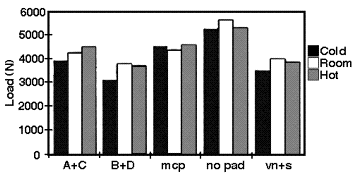
Figure 4. Average load values with varying temperatures on horizontal impacts.
Cold, 0°C; Room, 12.4°C; Hot, 38°C. See text for explanation of padding types.
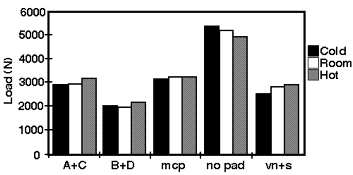
Figure 5. Average load values with varying temperatures on vertical impacts. Cold,
0°C; Room, 12.4°C; Hot, 38°C. See text for explanation of padding types.

Figure 6. Old versus new goal post pads at varying temperatures; pads were
weathered over a period of two years. Cold, 0°C; Room, 12.4°C; Hot, 38°C.
TABLE 1
Average load cell results of horizontal and vertical
goal post impacts with varying temperatures
Cold Room Hot
Padding 0°C 12.4°C 38°C
Type (N) (N) (N)
Horizontal Impacts
A and C 3911.0 4244.6 4483.4
B and D 3067.9 3748.2 3663.7
MCP 4472.6 4323.9 4539.8
No Pad 5210.7 5589.0 5284.2
VN+S 3463.0 3962.6 3840.3
Vertical Impacts
A and C 2909.9 2969.7 3201.1
B and D 1970.2 1964.7 2176.2
MCP 3106.3 3162.7 3178.6
No Pad 5258.7 5091.8 4886.0
VN+S 2564.4 2856.4 2955.8
TABLE 2
Average load cell results of horizontal and vertical
goal post impacts with varying goal post shapes
Padding Round Square
Type (N) (N)
Horizontal Impacts
A and C 4542.4 3883.6
B and D 3616.4 3370.2
MCP 4633.8 4257.0
No Pad 5314.2 5408.4
VN+S 3744.5 3766.0
Vertical Impacts
A and C 3588.8 2515.0
B and D 2388.8 1685.3
MCP 3289.2 3009.2
No Pad 4666.7 5491.0
VN+S 2998.3 2586.0
TABLE 3
Average load values for horizontal goal post impacts
of old and new goal post pads with varying temperatures
Old New
Temperature (N) (N)
Cold (0°C) 3524.0 3170.0
Hot (38°C) 4506.4 4112.6
Room (12.4°C) 4259.1 4040.5
TABLE 4
Average load cell results of horizontal and vertical
goal post impacts with all factors considered
Padding Horizontal Vertical
Type (N) (N)
A and C 4213.0 3026.9
B and D 3493.3 2037.1
MCP 4445.4 3149.2
No Pad 5361.3 5078.8
VN+S 3755.3 2792.2
RESULTS OF THE PILOT FIELD PHASE OF THE STUDY
A total of 471 soccer games were monitored between 1991 and 1993 on the four soccer
fields in Saline, Michigan and on the two soccer fields of Ann Arbor, Michigan. The soccer
teams participating in youth, teen and adult soccer leagues were included in the field
phase of this study. All fields were equipped with the VN+S prototype goal post padding.
Seven collisions of player versus post were documented. Of these 7 collisions, 0 injuries
were sustained. It should be noted the field supervisors who monitored the field, in
addition to documenting the number of injuries, also documented the reactions of the
officials, players, coaches, and spectators. All of these groups had no criticisms of the
posts, and in fact, did not realize that the posts had any type of padding. In addition,
the field supervisors monitored the rebound characteristics of the soccer balls after
having impacted the goal posts, and found that there were no adverse effects in reference
to the rebound of the ball off the post.
DISCUSSION
Soccer has been gaining popularity in the United States over the past decade. This
increase in participation level of the general public can be attributed to: a general
interest in the sport itself, the impression by the general public that soccer is safer
than other sports, and the arrival of the World Cup to the United States in 1994. The
majority of soccer injuries can be classified as impact injuries. These impact injuries
occur as player versus player, ball versus player and player versus goal post. It has been
documented by the Consumer Product Safety Commission that the most common fatality
scenario in the sport of soccer is related to the goal posts. The case reports presented
in this study are illustrative of the injuries which can occur upon impact with a
removable soccer goal post. In addition, stationary goal posts carry a potential for
impact injury. When a player collides with the post the post remains static, therefore the
player must absorb all of the energy from impact. In this study, the utilization of
padding on the stationary goal posts was found to be effective in absorbing some of this
impact energy. Therefore the laboratory portion of this study, as well as the prospective
field portion of this study, supports the concept that modifying the goal posts can alter
the pattern and frequency of injuries in the sport of soccer.
In the laboratory portion of the study it was evident that the prototypes tested at all
temperatures were found to absorb impact to a statistically significant level over the
standard control goal posts. The prospective field testing portion of the study
illustrates that in over a three year time period, no injuries were documented. No
complaints were logged with the field supervisors in reference to the implementation of
this passive preventive measure.
This study is yet another example of the impact of preventive approach within the field
of sports medicine. Previous studies implemented in recreational softball and baseball
have yielded a significant reduction in injuries and related health care costs. The
utilization of break-away bases, another form of a passive preventive intervention
resulted in a 96% reduction in injuries and a 99% reduction in health care costs.[2] An actuarial analysis performed by the CDC on the above data
revealed if all fields in the United States were switched to break-away bases 1.7 million
injuries/year and a savings of $2.0 billion/year in short term health care costs could be
realized.[3] The utilization of padding systems on stationary
goal posts in soccer has a similar effort as break-away bases have in softball and
baseball - a reduction in injuries without altering the flow or enjoyment of the game with
the added benefit of a potential reduction in associated health care costs.
ACKNOWLEDGMENTS
The authors wish to express their appreciation to Catherine McAuley Health System for
funding the laboratory portion of this study. In addition, thanks must go to Mr. John
Marcello and Danmar Products for their help in developing the goal post padding materials
utilized in this study. The Ann Arbor and Saline soccer communities must also be thanked
as well as Barb and Ken Sturms and Ms. Jackie Rowe. The authors also wish to thank Mr.
Robert Perino for his help with the laboratory setup and maintenance of the testing
equipment.
REFERENCES
- Hodgson VR, Mason MW, Thomas LM. Head model for impact. The
Sixteenth Stapp Car Crash Conference - Proceedings. New York, New York: SAE, Inc, 1972
(SAE no. 720969), pp 1-13.
- Janda DH, Wojtys EM, Hankin FM, Benedict ME. Softball sliding
injuries. A prospective study comparing standard and modified bases. JAMA 259:
1848-50, 1988.
- Janda DH, Wojtys EM, Hankin FM, Benedict ME. Softball sliding
injuries - Michigan, 1986-1987. MMWR 37: 169-70, 1988.
- Maehulm S, Daljord OA. Football injuries in Oslo: a one year
study. Br J Sports Med 8(3): 186-190, 1984.
- Schimdt-Olsen S, Jorgensen U, Kaalund S, Sorensen J. Injuries
among young soccer players. Am J Sports Med 19(3): 273-275, 1991.
- Sullivan JA, Gross RH, Grana WA, Gracia-Moral CA. Evaluation
of injuries in youth soccer. Am J Sports Med 8(5): 325-327, 1980.
- United States Consumer Product Safety Commission summary reports.
National Electronic Injury Surveillance-System: 1990 through 1992.
This article was published as:
"Goal Post Injuries in Soccer"
The American Journal of Sports Medicine
Vol. 23, No. 3, 1995; pp. 340-344
Janda DH, Bir C, Wild B, Olson S, Hensinger RN
It is possible to order a copy of this article.
|